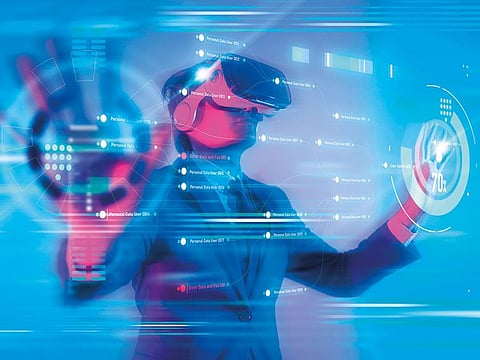Middle East's construction can dig deep into Metaverse possibilities
Construction and project management will be early winners from this AR landscape

According to many, we have long moved past the digitisation phase and are now prepared to welcome bigger advancements. The Metaverse, which emerged following the renaming of the popular social media platform Facebook to ‘Meta,’ is one such innovation.
The term encompasses more than just video games, and experts generally refer to it as virtual reality, as it is characterised by virtual worlds that continue to exist even when you are not present physically. This raises the question of how this technology might impact various industries, particularly construction, and integrate into its day-to-day operations.
Moving away from thinking 2D
Since the majority of the design and technical processes are completed using a screen and drawings, it is fair to assume that this is well-advanced in the construction industry. Earlier, a 3D model of the project in construction can only be viewed on a 2D monitor or TV and did not offer this immersive experience. However, though these restrictions are still present, it is anticipated that they will be resolved, especially with the latest digital technologies available in the market.
Technologies like Digital Twins that create a digital replica of a structure, Business Information Modelling (BIM), or AR are all in some ways related to the Metaverse concept. A prominent example can be the HoloLens, where construction stakeholders can see the design intent on the jobsite. Imagine viewing the Museum of The Future from the inside and out and being able to touch it without actually being present there.
This technology used during the construction phase empower field workers to make more informed decisions by giving models real-world context. The goal of digital construction technology is to integrate the physical and digital worlds, and these technologies, like the idea of the Metaverse, are achieving just that.
Design and build
The emergence of Web 3 and the Metaverse present a range of opportunities for Middle Eastern industries. In fact, the Ministry of Economy of the UAE has announced a new headquarters in the Metaverse, which is accessible to everyone in the world. The announcement comes after the government's Metaverse strategy, to create 40,000 virtual jobs by 2030. These developments will surely expedite the adoption of the Metaverse and its applications.
Even when considering its adoption, it is crucial to recognise the significance of the Metaverse during all three phases of construction, which are design, development, and construction. For instance, it is crucial for construction project managers to have a thorough understanding of building design and development.
Building managers can use the virtual representation of the construction environment to keep a constant eye on everything going on during the building stage, even if they are unable to be physically present at every location. Similarly, assuring swift remote actions is also one of the main uses of the Metaverse in the construction sector.
The connected construction ideology is one example of how solutions from leaders in construction technology have already introduced the Metaverse model in a different way. Eventually, it is only a matter of time before businesses realise its true potential and adopt the applications to boost operational accuracy.
Sign up for the Daily Briefing
Get the latest news and updates straight to your inbox



